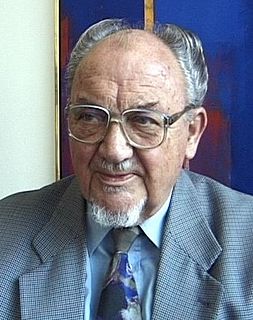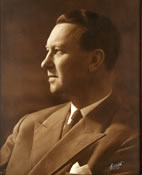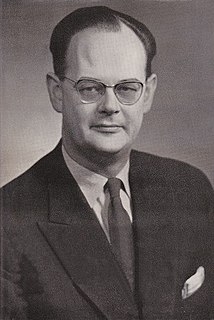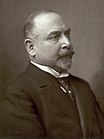
General elections were held in Denmark on 12 December 1990. Although the election resulted in a strong gain for the Social Democratic Party, Poul Schlüter's coalition government was able to continue despite the Danish Social Liberal Party leaving. Schlüter's coalition consisted of the Conservative People's Party and Venstre. Voter turnout was 82.8% in Denmark proper, 54.4% in the Faroe Islands and 50.8% in Greenland.

General elections were held in Denmark on 8 September 1987. Although the Social Democratic Party remained the largest in the Folketing with 54 of the 179 seats, the Conservative People's Party-led coalition government was able to continue. Voter turnout was 86.7% in Denmark proper, 68.9% in the Faroe Islands and 44.9% in Greenland.

General elections were held in Denmark on 8 December 1981. The Social Democratic Party remained the largest in the Folketing, with 59 of the 179 seats. Voter turnout was 83.3% in Denmark proper, 55.4% in the Faroe Islands and 61.0% in Greenland.

General elections were held in Denmark on 23 October 1979. The Social Democratic Party remained the largest in the Folketing, with 68 of the 179 seats. Voter turnout was 85.6% in Denmark proper, 65.4% in the Faroe Islands and 50.3% in Greenland.

General elections were held in Denmark on 15 February 1977. The Social Democratic Party remained the largest in the Folketing, with 65 of the 179 seats. Voter turnout was 88.7% in Denmark proper, 62.9% in the Faroe Islands and 70.0% in Greenland.

General elections were held in Denmark on 9 January 1975. The result was a victory for the Social Democratic Party, who won 53 of the 179 seats. Voter turnout was 88.2% in Denmark proper, 56.1% in the Faroe Islands and 68.7% in Greenland.

General elections were held in Denmark on 14 May 1957. The Social Democratic Party remained the largest in the Folketing, with 70 of the 179 seats. Voter turnout was 83.7% in Denmark proper, 37.6% in the Faroe Islands and 61.8% in Greenland.

General elections were held in Denmark on 15 November 1960. The Social Democratic Party remained the largest in the Folketing, with 76 of the 179 seats. Voter turnout was 85.8% in Denmark proper, 57.1% in the Faroe Islands and 65.8% in Greenland.

Folketing elections were held in Denmark on 6 July 1920, except in the Faroe Islands, where they were held on 3 August. The result was a victory for Venstre, which won 51 of the 140 seats. Voter turnout was 74.9% in Denmark proper and 46.4% in the Faroe Islands.

Folketing elections were held in Denmark on 21 September 1920, except in the Faroe Islands, where they were held on 30 October. They were the first in which South Jutland County participated since the Schleswig Plebiscites and the return to Danish rule, and the total number of seats in the Folketing was increased from 140 to 149. The result was a victory for Venstre, which won 51 of the 149 seats. Voter turnout was 77.0% in Denmark proper and 56.2% in the Faroe Islands.

Folketing elections were held in Denmark on 2 December 1926, except in the Faroe Islands where they were held on 20 December. The Social Democratic Party remained the largest in the Folketing, with 53 of the 149 seats. Voter turnout was 77.0% in Denmark proper and 40.2% in the Faroes.

Folketing elections were held in Denmark on 24 April 1929, except in the Faroe Islands where they were held on 29 May. The Social Democratic Party remained the largest in the Folketing, with 61 of the 149 seats. Voter turnout was 79.7% in Denmark proper and 58.0% in the Faroes.

Folketing elections were held in Denmark on 16 November 1932, except in the Faroe Islands where they were held on 12 December. The Social Democratic Party remained the largest in the Folketing, with 62 of the 149 seats. Voter turnout was 81.5% in Denmark proper and 59.2% in the Faroes.

Folketing elections were held alongside Landsting elections in Denmark on 30 October 1945, except in the Faroe Islands where they were held on 20 November. The Social Democratic Party remained the largest in the Folketing, with 48 of the 149 seats. Voter turnout was 86.3% in Denmark proper and 57.3% in the Faroes.

Folketing elections were held in Denmark on 28 October 1947, except in the Faroe Islands where they were held on 18 February 1948. The Social Democratic Party remained the largest in the Folketing, with 57 of the 150 seats. Voter turnout was 85.8% in Denmark proper and 60.1% in the Faroes.

Folketing elections were held alongside Landsting elections in Denmark on 21 April 1953, except in the Faroe Islands where they were held on 7 May. The Social Democratic Party remained the largest in the Folketing, with 61 of the 151 seats. Voter turnout was 80.8% in Denmark proper but just 20% in the Faroes.
Folketing elections were held in Denmark on 7 June 1864. The National Liberal Party emerged as the largest faction, winning 40 of the 101 seats. Following the elections, Christian Albrecht Bluhme became Prime Minister on 7 July.
Folketing elections were held in Denmark on 14 June 1855 in order to approve amendments to the constitution. Peter Georg Bang remained Prime Minister following the elections.
Folketing elections were held in Denmark on 14 June 1858. Carl Christian Hall remained Prime Minister following the elections.
Folketing elections were held in Denmark on 14 June 1861. Carl Christian Hall remained Prime Minister following the elections.













